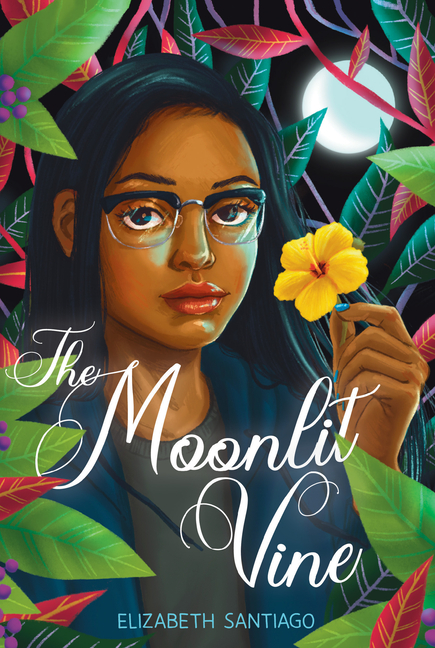Meet-the-Author Recording with Elizabeth Santiago
The Moonlit Vine |
Elizabeth Santiago introduces and shares some of the backstory for creating The Moonlit Vine.
Translate this transcript in the header View this transcript Dark mode on/off
Elizabeth Santiago: Hi, this is Elizabeth Santiago and I am the author of The Moonlit Vine. I'm going to tell you a bit about the inspiration for the book, and then I'll share a short excerpt with you. As a Puerto Rican woman, I had always been told and always believed that I was Taíno. My mother often said, "Nosotros somos indios, africanos, y españoles," loosely meaning we're made up of Indian, African, and Spanish ancestry. Growing up, I knew a lot about the Spanish and a little less about my African ancestors, but very little to nothing about my Indian or rather Taíno ancestors. What is documented comes from stories shared by Spanish and other colonizers, stories that have constituted the dominant narratives we know today with the most prevalent being that the Taíno did not survive.
In 2018, I read an article from the Smithsonian titled, Ancient DNA Contradicts Historical Narrative of 'Extinct' Caribbean Taíno Population. This article talked about a research project that discovered that present day Puerto Ricans had the most Taíno DNA. And something reawakened inside of me, a need to honor my ancestors by digging deeper and learning more about how they had ensured their survival. I also wondered how historical trauma affects our present day lives and how the past is connected to present day circumstances.
So, The Moonlit Vine weaves in historical chapters and content into a contemporary work of fiction. Not all of the characters in the book are fictional though, Anacaona and Caonabo are very real historical figures, royalty in the Caribbean before Columbus. I chose Anacaona to begin the matrilineal line to the present day fictional character of Taína because I wanted to show ancestral unity among Caribbean islands that have Taíno ancestors like Haiti, Dominican Republic, and Puerto Rico. Since Anacaona ruled in present day Haiti and had a daughter, Higuemota, who has lost to historical documentation, I decided to take fictional liberties with what happened to Higuemota, and that's where my story begins. Here's an excerpt from the opening of the book.
Higuemota knelt next to her mother, who pulled two items from a pouch sitting on the belt wrapped around her waist, a zemi and a gold amulet. Zemi is like the one Anacaona held were carved representations of gods and were sacred objects for their people. This particular zemi was triangular in shape and sculpted to look like a frog, the symbol of fertility. The frog's legs had been chiseled along the sides until they intertwined at one of the points on the triangle. On the opposite side was a face, not a frog's face, but a human face with a large gaping mouth.
The gold amulet sat at the end of a string of small, perfectly round stone beads. On the front of the amulet, the figure Atabey, the goddess of life was engraved. If you live and are able to pass on your knowledge of who we are, our people will never die. Anacaona handed the zemi to Higuemota. It hummed in her hand and it felt like it would rip through her palm. As soon as they kidnapped Caonabo, I had this made in the likeness of a frog to show fertility, but with a human face to show your father's dignity and wisdom. After he was executed, I went to the shamans and had them incorporate some of my lifeblood into it as a symbol of our struggle. That's the end of the excerpt.
Okay, so you know that zemi makes its way to my protagonist eventually, but you'll get to see how the Taíno over a more than 500 year period, were able to get them safely to her.
This Meet-the-Author Recording with Elizabeth Santiago was exclusively created in July 2023 by TeachingBooks with thanks to Lee & Low.



